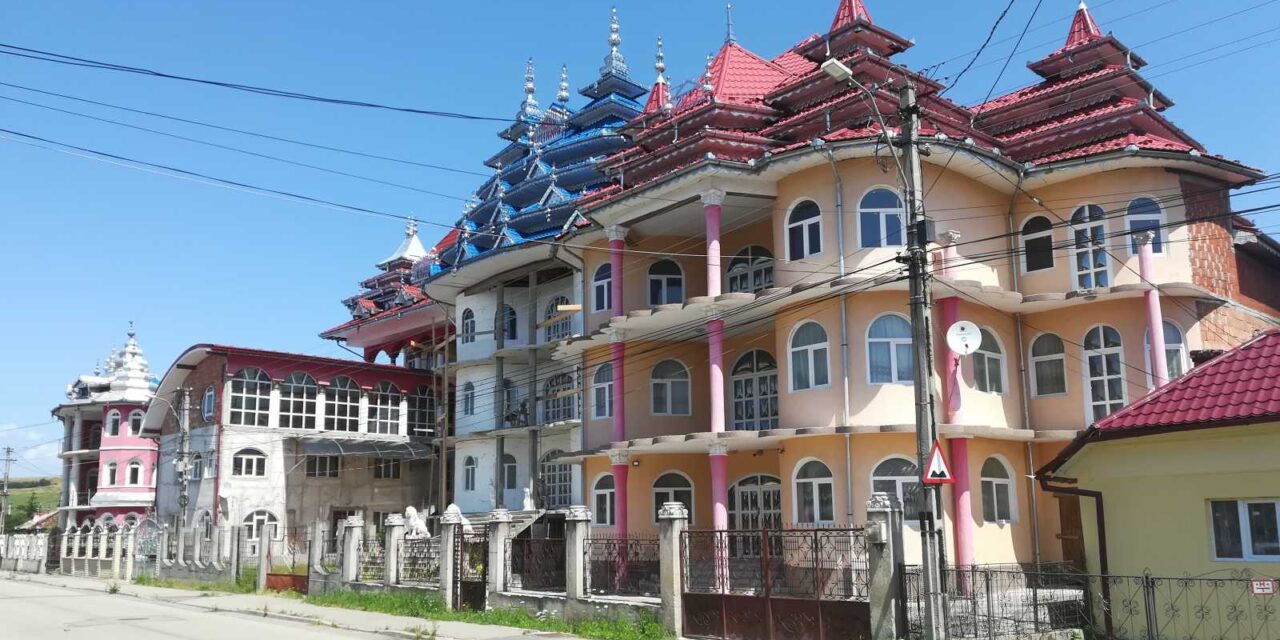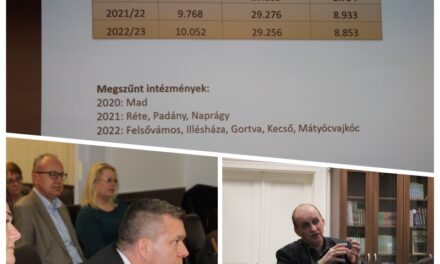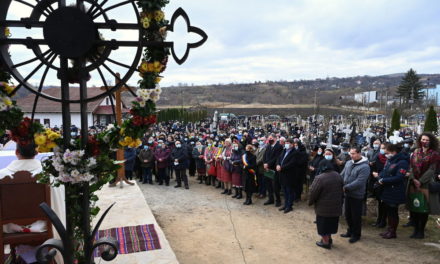The local gypsies are proud of their Indian origin and try to copy the architectural style there with their many-towered, kitschy houses, but according to the Bánffyhunyad city administration, paying real estate taxes is not the main virtue of the owners of the strange buildings.
Bánffyhunyad has a magnificent Reformed church, but the name of the small town in Kalotaszeg is certainly not known to most of the people who visited it in the 13th century. it is associated with a historical building built in the 19th century, but with the gypsy palaces that are multiplying like mushrooms in the settlement. Until the beginning of the 90s, there were not only no Gypsy palaces in Bánffyhunyad, but also hardly any Roma. The local Roma community lived in a settlement, the first house in the town was bought in 1992.
From the mid-1990s, Bánffyhunyad appeared in Bánffyhunyad with bulky, tasteless decorations suitable for Kusturica films.
Currently, there are almost 90 of them, the staff of the municipality's tax affairs department said. The first ones were built on Kossuth Lajos (Horea) Street, the section of the Cluj-Nagyvárad main road that passes through the city, but in recent years there have been more and more of them in the side streets opening from it, especially on the side of the railway.
For many years, the owners of the gypsy palaces did not pay real estate tax, claiming that the houses were not finished, which was not the case, and is not far from reality.
The city administration managed to force them to pay taxes by not issuing the documents needed to prepare an identity card to those with tax arrears. "In terms of tax discipline, they are not far behind the Romanians and the Hungarians," said one official of the municipality.
Gypsy palaces are typically several hundred square meters, although there are also smaller ones, the annual tax to be paid for them does not reach 1,000 lei even for the larger ones.
A license yes, a tower no
In the past, it was common for them to be erected without a building permit, but in recent years, the municipality has forced the owners to comply with the law in this area as well. Almost a decade has passed since the last lawsuit for construction without a permit. The local authorities also try to prevent stylistic debauchery,
more recently, they don't allow a multitude of turrets to be attached to the houses, nor Mercedes logos.
Bánffyhunyad had 9,011 inhabitants in 2011, but only 8,069 people were registered in last year's census. Not only the total population decreased, but also the number of Roma, the previous approx. From 11 percent to under 9 percent. Since the birth rate among them is higher than average, this data seems highly questionable. The explanation is probably that most of them lead a two-person lifestyle, spending most of the year away from home, the majority in Great Britain and Ireland. It can be seen from that
around the gypsy palaces, there are many right-hand drive cars from the two island countries.
"These are self-conscious people, they insist that they are Gypsies, not Roma. They are proud of the fact that they came from India, which is why they build their houses in this style," says a local Hungarian who has Gypsy neighbors. The palaces really have an Indian feel to them, as shabby and kitschy as many modern buildings in the subcontinent.
In the BBC's crosshairs
The news of the gypsy palaces in Bánffyhunyad has spread far beyond the country's borders, especially after the BBC reports and documentary films about beggars in Great Britain in 2011. British reporters regularly observed and followed Romanian children begging in England, and found out that respectable sums were raised from donations.
A beggar from Bánffyhunyad said that he earns around 5,000 pounds a month, and a British police inspector specializing in the fight against human trafficking estimated the amount that a child can beg for in a year at 100,000 pounds a year.
You can build a huge and fancy house from this amount. In many cases, this is indeed the source of the money, as the BBC reporters followed a family named Roștaș until Bánffyhunyada, which owns two properties in the city, and they are not just any properties.
Living with the local gypsies can be considered normal, our source from Bánffyhunyad tells us: they are noisy and don't exactly follow the rules, but they are not aggressive, they don't commit crimes, and they don't even drink much alcohol, which probably has religious reasons.
The vast majority of gypsy palaces are not inhabited, they serve more as a status symbol than for practical purposes. In many cases, the fences are just as old as the houses themselves, which often have large tin signs on their facades announcing who the proud owner is. Even though they were over-encrypted, they were rushed, and their contractors obviously did work of dubious quality.
Some of them show the iron teeth of time, the owners do not take care of their maintenance.
Due to their astonishing nature, they could even be used as tourist attractions, but the municipality has not dealt with the idea until now. The main reason for this is that they are privately owned, and their owners are particularly suspicious of foreigners, especially since the BBC's investigative report. It's a shame, because a unique open-air museum could be put together from them.
Featured image: Zoltán Maszol/Pengő













